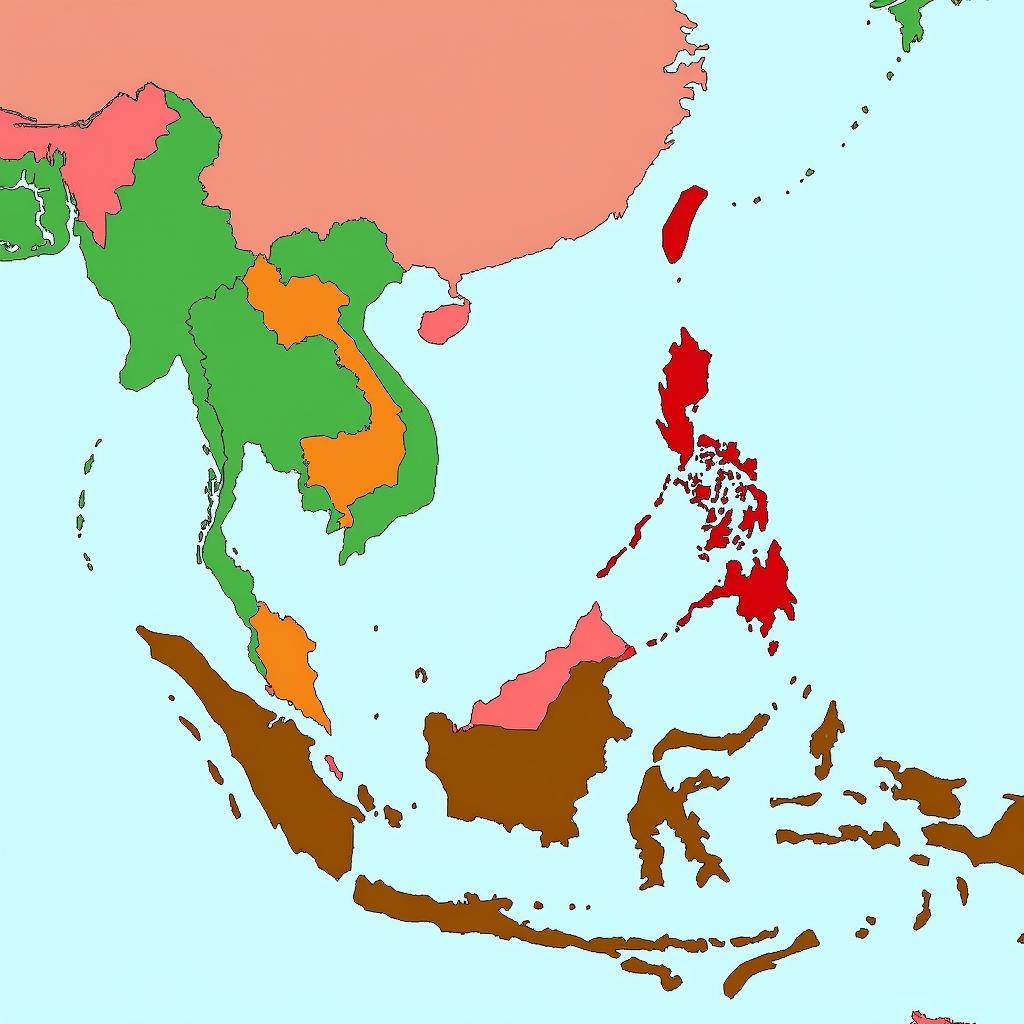The ASEAN Economic Community (AEC) represents a major step towards regional integration in Southeast Asia. Established in 2015, the AEC aims to create a single market and production base, allowing for the free flow of goods, services, investments, skilled labor, and capital across the ten ASEAN member states. This article delves into the nuances of the AEC, exploring its impact on the region and its people. aec asean economic community adalah
What is the Purpose of the ASEAN Economic Community?
The ASEAN Economic Community seeks to enhance the region’s competitiveness by promoting greater economic integration. This is achieved through the elimination of tariffs and non-tariff barriers, the harmonization of standards and regulations, and the facilitation of cross-border trade and investment. The AEC also aims to create a more level playing field for businesses, promote innovation, and attract foreign investment.
How Does the ASEAN Economic Community Work?
The AEC functions on the principle of “one vision, one identity, one community.” This involves establishing a common market through the implementation of various agreements and initiatives. These include the ASEAN Free Trade Area (AFTA), the ASEAN Framework Agreement on Services (AFAS), and the ASEAN Comprehensive Investment Agreement (ACIA). The AEC also works to strengthen regional cooperation in areas such as intellectual property rights, competition policy, and consumer protection.
The Benefits and Challenges of the ASEAN Economic Community
The AEC presents numerous opportunities for businesses and individuals in Southeast Asia. By creating a larger market, the AEC enables businesses to expand their reach and access new customers. It also promotes greater competition, leading to lower prices and higher quality goods and services. For individuals, the AEC offers greater mobility and access to job opportunities across the region.
However, the AEC also faces several challenges. These include disparities in economic development among member states, the need for further harmonization of regulations, and concerns about the impact on small and medium-sized enterprises (SMEs). Addressing these challenges is crucial to ensuring the success of the AEC.
What Sectors Does the ASEAN Economic Community Cover?
The AEC covers a wide range of sectors, including goods, services, investment, and skilled labor. Key sectors that are prioritized under the AEC include manufacturing, agriculture, tourism, and information and communications technology (ICT). 9 sektor masyarakat ekonomi asean
The Future of the ASEAN Economic Community
The AEC is an ongoing process, and its success depends on the continued commitment of ASEAN member states. Further integration and harmonization are necessary to fully realize the potential of the AEC. This involves addressing the remaining non-tariff barriers, strengthening regional connectivity, and promoting greater inclusiveness. ase modellen
Dr. Maria Santos, a leading economist specializing in Southeast Asian affairs, notes, “The AEC’s success hinges on fostering a business environment that is both competitive and inclusive, allowing all member states to reap its benefits.”
Another expert, Professor Lee Wei Min from the National University of Singapore, adds, “The AEC must prioritize sustainable development and ensure that economic growth benefits all segments of society.”
Conclusion
The ASEAN Economic Community and its growth holds immense potential for Southeast Asia. By fostering regional integration and promoting greater cooperation, the AEC can help to create a more prosperous and dynamic region. artikel masyarakat ekonomi asean Continued efforts to address the challenges and seize the opportunities presented by the AEC will be crucial to achieving its long-term goals.
FAQ
- What is the main goal of the AEC? To create a single market and production base in Southeast Asia.
- When was the AEC established? 2015
- How many member states are there in the AEC? 10
- What are some of the key sectors covered by the AEC? Manufacturing, agriculture, tourism, and ICT.
- What are some challenges facing the AEC? Disparities in economic development, non-tariff barriers, and the need for further harmonization.
- How can I learn more about the AEC? Visit the ASEAN Secretariat website or contact your local trade association.
- What are the benefits of the AEC for businesses? Increased market access, reduced trade barriers, and greater opportunities for investment.
When you need support, please contact us by phone: 0369020373, email: aseanmediadirectory@gmail.com, or visit our address: Ngoc Lien Village, Hiep Hoa, Bac Giang, Vietnam. We have a 24/7 customer service team.
